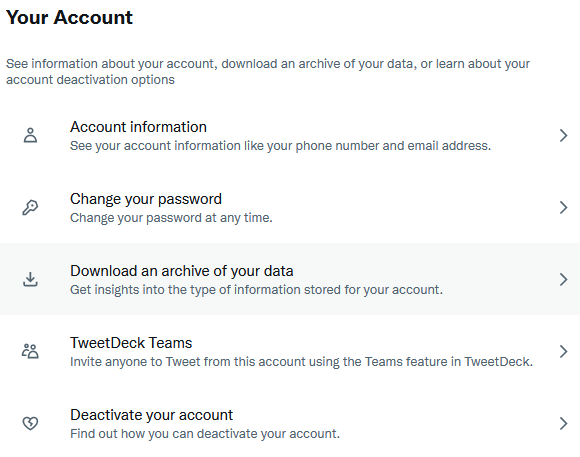Since Elon Musk took over Twitter, the company has had a rough go, to say the least. Significant portions of the staff were fired or left the company, advertisers bailed, and Twitter rolled out and then suspended a revamped subscription service after it was abused to impersonate high-profile accounts and brands (as predicted).
With the significant loss of staff, some think it’s only a matter of time until Twitter breaks. While I’m not convinced the platform will totally die, I’ve been looking into (and signing up for) some of the various alternate platforms I’ve seen mentioned. None of this is a recommendation for what people should switch to — instead, it’s a resource of possible alternatives for people who may want to try something new.
I’ll run through them below:
Mastodon
I’ve actually written about this one before (you can read about it here). In short, Mastodon is probably the most Twitter-like of alternate platforms. What sets it apart is that its open source and decentralized. That means there is no single governing entity controlling everything. Instead, Mastodon is made up of various servers, which can be thought of as digital communities (they’re often based on locality or shared interests). Each server effectively governs itself with its own moderation and rules. However, the decentralized nature and servers can prove confusing for newcomers.
Check out our Mastodon explainer here. You can also learn more about Mastodon here.
Hive Social
I hadn’t heard of Hive until earlier today, but it seems to be picking up steam quickly (on November 20th, Hive shared on Twitter that it had almost hit 800k “Besties,” marking a growth of 200,000 new users over a few days).
While I haven’t spent much time with Hive yet, it feels like a more fun, social Twitter. Highlight features include profile music, text and image posts, polls, and Q&As. Heck, you can even theme it with colours of your choice. Hive will definitely be one to keep an eye on and you can sign up for free via the iPhone or Android app.
Learn more about Hive here.
Post.news
Post.news, on the other hand, appears to a different approach from Hive. Rather than a fun, colourful, social Twitter-like experience, Post seems to lean harder into the news and discussion aspects of Twitter. The bad news about Post is that it’s not broadly available yet. At the moment, there’s a lengthy waitlist (according to an email I received from Post earlier this morning, there are about 125,000 people on the list). Post encourages people to climb up the waitlist by inviting others to join with a referral code, and I’ve seen some reports that it’s fast-tracking people who have large Twitter followings.
Post comes from former Waze CEO Noam Bardin, who makes it clear that he doesn’t want Post to replace Twitter as the defacto online battleground:
“Post will be a civil place to debate ideas; learn from experts, journalists, individual creators, and each other; converse freely; and have some fun. Many of today’s ad-based platforms rely on capturing attention at any cost — sowing chaos in our society, amplifying the extremes, and muting the moderates.”
While I’m definitely intrigued by Post, the lengthy waitlist has me thinking the service might be eclipsed by another alternative before it has a chance to take off.
You can learn more about Post here.
Cohost
Last up is Cohost, which is made by the ‘anti software software club’ (ASSC). It describes itself as a not-for-profit software company that “hates the software industry.” At the moment, Cohost looks a lot like an old internet forum, which might be a hit for some. Moreover, Cohost is big on not using ads or algorithms, although it can make it a little tough for people to find things.
Like some of the other alternatives, Cohost has a waiting period before people can start posting. According to Cohost, the waiting period lasts “a day or two” and users can still follow, like, and share other posts — they just can’t post.
You can check out Cohost here.
Other options
Of course, there are other existing social networks that people might consider switching to if Twitter doesn’t work out. Facebook, Instagram, Discord, and Tumblr, for example, all offer some similar features to Twitter and already have well-established audiences. Ultimately, it comes down to what you want out of your social media, and finding a platform that meets those needs.













